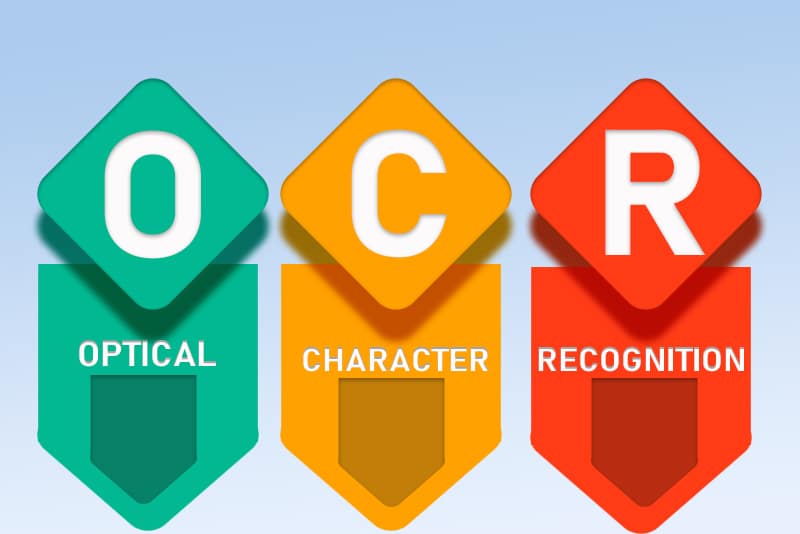Businesses in diverse sectors are on the road to digital transformation with an objective to keep up with the fast pace of digital change. Converting increasing piles of text documents into digital format is no more a new trend. In fact, businesses have now realized that conversion of data into digital format enables them to scan, store and access vital data, and also ensure its safety. Insurance firms are no exception in this case. Optical Character Recognition (OCR) is a critical technology that is important for the ongoing digital transformation of the insurance industry. It allows automated document onboarding, sorting and analysis, and makes all business workflows – right from claim processing to product development to customer services – more effective. Relying on the services of a data entry company that provides OCR solutions can help insurance companies on the course of digitization and automation.
How OCR Helps in Automating Document Processing
Insurance firms have to deal with heaps of documents on a day-to-day basis. Right from policies to cover notes, certificate of insurance, proposal forms and endorsements, insurance firms have a massive number of documents to execute daily. Processing these documents manually involves too many labor hours, claim processing time and hourly cost. Incorporating OCR technology can help resolve these challenges. OCR is one such tool that can optically recognize text-based and image-based content and digitize it through data capture and automated data entry. With this automated data extraction software technology, insurers can execute data analysis, customer services, and other tasks quickly. One of the biggest benefits of automated data capture over manual systems is its document processing capabilities.
Benefits of OCR in the Insurance Industry
Optical Character Recognition (OCR) in insurance offers an exciting avenue to help insurance firms achieve seamless control over their tasks. In simple terms, OCR is a technology that transforms electronic or mechanical scanned or photographic images of printed, typewritten or handwritten text into computer-readable text/images. Reports suggest that the global OCR market is expected to reach US$ 12.6 billion by 2025. Here discussed are some important benefits of OCR in the insurance industry that helps drive financial performance and create better customer experiences –
- Helps in Strategic Customer Acquisition – Matching insurance products and services based on customer needs is a key improvement area in better customer acquisition. For instance, certain insurance firms now offer online solutions that allow potential customers to upload a copy of their current insurance policy. This allows automated analytics tools with text recognition features to analyze the insurance policy document which is uploaded online and compare it to the company’s own products/competitors’ products to see if they can offer a better/cheaper insurance plan. Since this involves huge quantity of data, manual processes may not be capable of handling the front-end data capture efficiently. OCR automatically transforms any number of client documents into accurate/structured data in a format suitable for further analysis.
- Enhances Customer Services – OCR is a technological breakthrough in replacing manual scanning of paper documents. Before the advent of OCR, insurance companies scanned paper documents and turned everything into flattened digital image files and then used manual indexing on each document. Managing a manual indexing operation turned out to be error-prone, inconsistent and expensive. This manual work process couldn’t handle the huge volume of content which in turn resulted in delays in workflow. Heavy work delays can affect customer experience since customers require immediate resolution for each of their issues. Delayed claim settling creates additional customer stress thereby deteriorating retention rates and brand image. OCR deployment enables customers to process their documents in an easy and ready for use format.
- Quicker Resolutions and Reduced Process Lags – When it comes to insurance claims processing, OCR can offer the benefits of quicker and timely operations. Earlier, clients had to wait for a longer time to complete the entire claims process. OCR now makes it simpler and easier to encode the claims processing details within a matter of seconds.
- Reduces Costs – Insurance agencies tend to look out for new ways to improve profit margins without sacrificing customer service. OCR enables enterprises to lower their costs by eliminating manual steps in their data capture methods and reducing errors and omissions. Switching over from manual indexing to automated OCR process would result in reducing manpower and associated costs. This also increases accuracy by avoiding errors and omissions. A minute error could result in increased costs in the data capture process, mainly in the form of the time involved in searching for documents which are incorrectly indexed through a manual process. OCR considerably reduces these kinds of errors and improves profitability by way of cost reduction.
- High Precision Predictions – OCR can also be applied to the vast volumes of legacy data (unstructured paper and image files) that insurance companies have accumulated over their lifespan. OCR can convert bulk data into easier formats that are usable by Artificial Intelligence (AI) or Machine Learning (ML) software. These tools can then filter and analyze that historical data (as well as incoming new data) to make predictions about the latest trends in the marketplace, future changes in customer behavior and emerging risks. For instance, some insurance companies utilize OCR along with an AI solution to identify health-related changes in customer behavior over time. The companies feed OCR-processed historical client data into an AI solution and combine that with OCR-processed data from external sources such as census information, clinical trial results, medical studies, or lifestyle questionnaire results. This information can be used to identify trends that result in lower payouts or fewer claims, such as lower disease and mortality rates.
- Enhances Accuracy with Automation – OCR-enabled insurance claims processing is an automated program that ensures greater accuracy without much manual intervention. This reduces the chances of all sorts of errors and improves the efficiency of the workflow. OCR ensures data verification and validation, and this helps in accurate output.
Optical character recognition (OCR) is a prominent trend for the insurance landscape in the near future. It is the cornerstone of data capture and management processes in the insurance industry. It enables companies to get full value from their data and their automated analytics tools. Accurate OCR technology can standardize documents by turning scanned documents into searchable PDFs or into any other file type. A reliable data conversion service can help replace paper files with a digital archive. In particular, OCR enables companies to provide better customer service, attract more clients, reduce costs, and even predict the future.
| At Managed Outsource Solutions (MOS), our team provides high-quality data conversion services for diverse business sectors, to transform bulk documents into the desired format, making the data easy to access and store. For support, call us at (800)-670-2809! |




